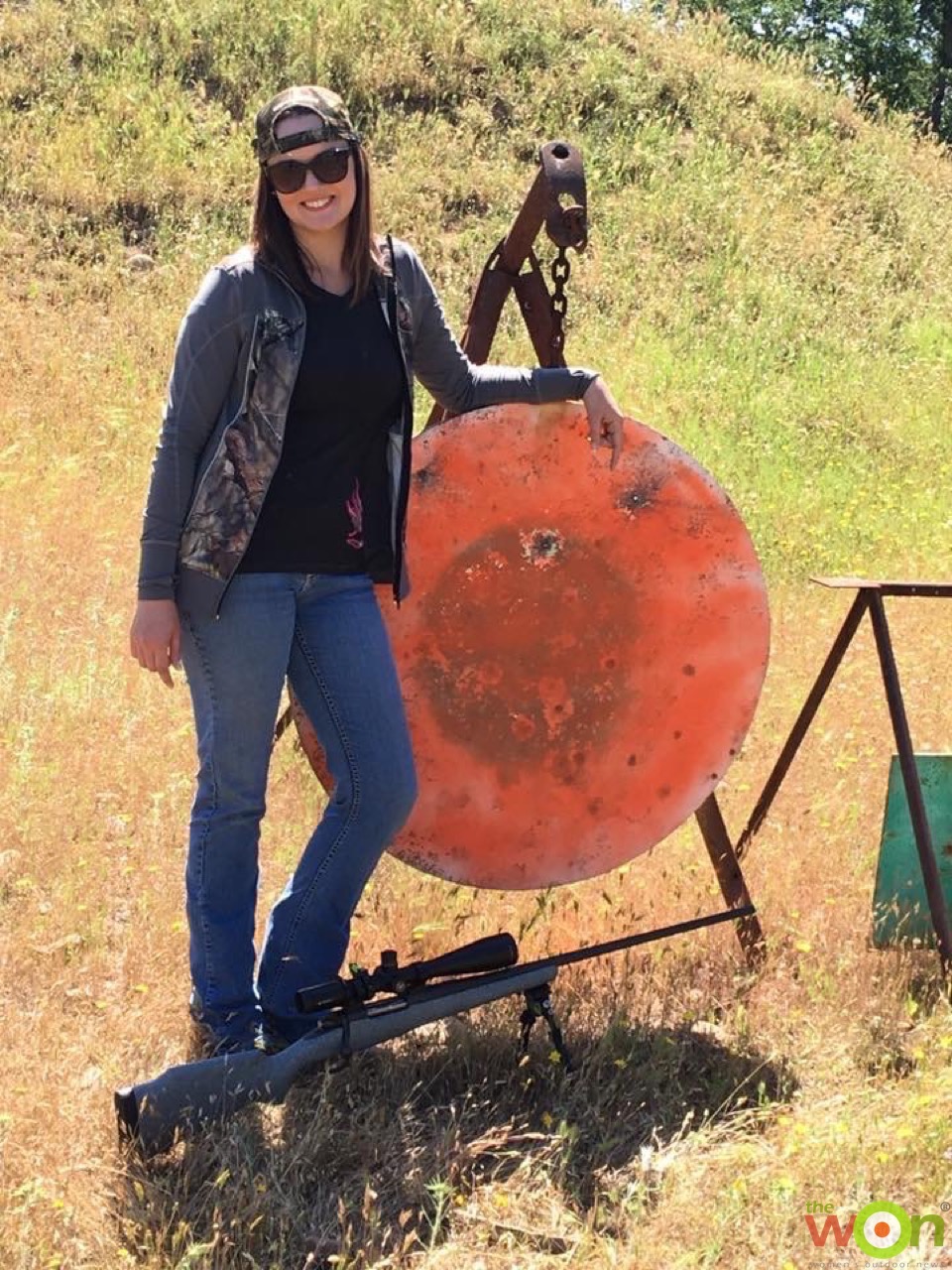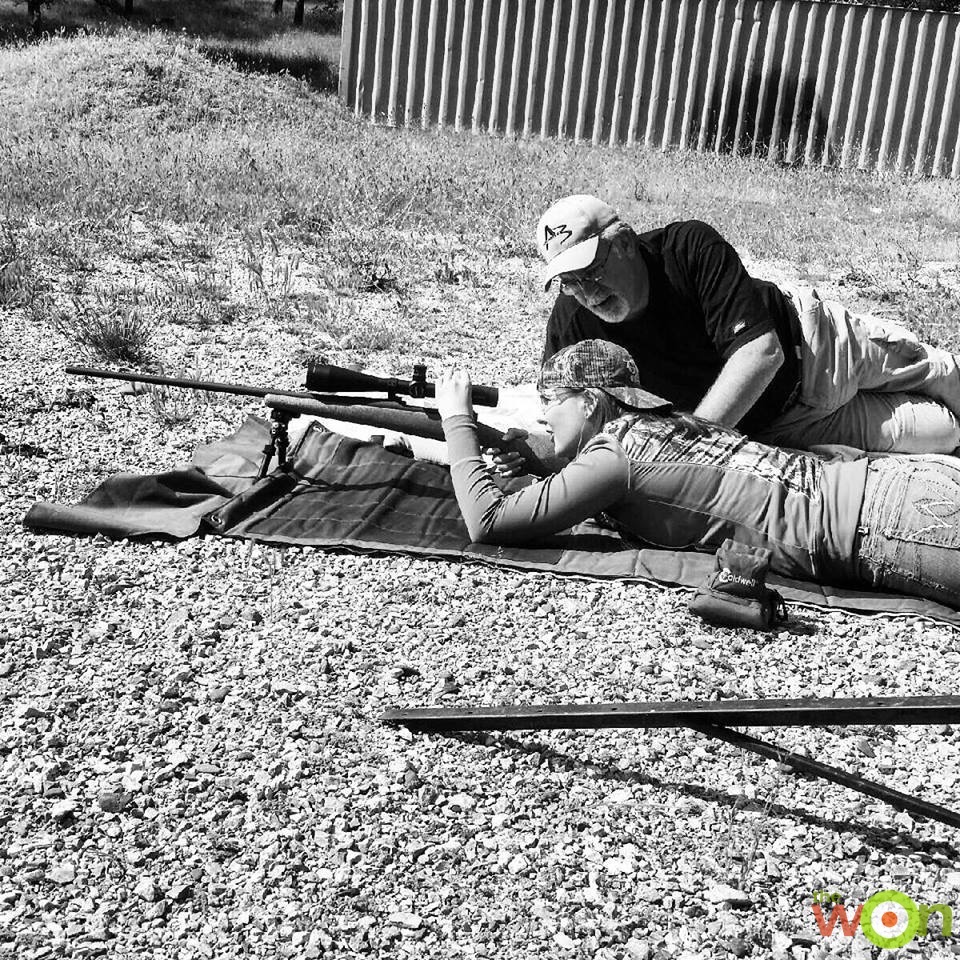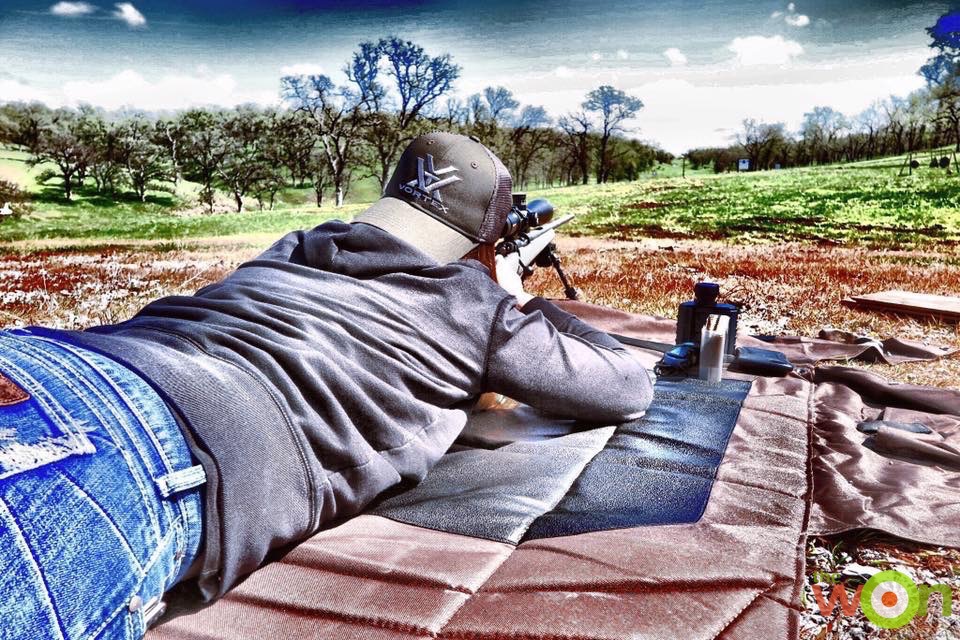My first introduction to long-range shooting came by total accident. My buddy Eric Wahlberg, owner of Inner Mountain Rifle Stocks, was having yet another Facebook compliance issue with his business page. I walked him through a few options to handle it, and he promised to repay me by taking me shooting the next time he was in town. I honestly had no idea what we’d be doing, but I was excited that I would get a chance to shoot his top-of-the-line, custom-built rifle.
Fast-forward 6 months, and Eric was in town. I met him out at the Hoy ranch, which has a private, long-distance rifle range. As I got out of the truck, I couldn’t believe how beautiful the range was. There was a custom shooting shed, complete with a bathroom, a kitchen, a trap deck, and enough room at the indoor shooting bench for at least 3 shooters. Eric pointed out that the farthest target sat at a staggering 813 yards, and told me that by the end of the day, I’d be hitting that 813-yard gong like a pro. That knocked me off my feet. Up until that day, my longest shot was 287 yards, which felt like miles when you’re facing into the wind, lying prone on a hill in a pile of rocks and South African thornbushes. I couldn’t imagine taking an accurate shot at 800+ yards.

Eric explained that the difference in long-range shooting doesn’t come strictly from the longer distance, but more in the shooter’s ability to read weather conditions. He also demonstrated that using a riflescope means more than just looking through the eyepiece; all those turrets and levels that I’d never used in my under-300 yard shots are actually there for a reason. He gave me a crash course in long-range shooting, which I’ve broken down for you here.

Having someone who can operate the range finder and spotting scope for you while you’re behind the gun is important. Not only that, but when you’re learning a new shooting style or trying a different brand of ammunition, it’s nice to be able to have someone to bounce ideas off of, and who can make sure you are reading the weather conditions correctly. If you can find a long-range mentor — someone who has hundreds of hours of long-range shooting experience and has used all different types of equipment — you’ll be shortening your learning curve. I’m blessed to have not only Eric, but also Don Frazier, Mike Perkins and Dennis VanAcker as my mentors — each one of them has taught me something new and different. When we all get together and start talking shop, I can’t help but be in awe of their collective knowledge and their passion for the sport.
Side note: If you can’t find a mentor or partner locally, the next best thing is to take a class. While it won’t provide someone to spot for you out on the range, it will give you a solid 3 to 4 full days’ worth of invaluable training and experience. I highly recommend Mike Perkins’ Crosshairs Long Range Hunting School, especially if you are looking to put your newfound long-range skills to the ultimate test and fill the freezer. If you’re looking for a more militarized sniper school, Charlie Mike Precision puts on a great long-range rifle and combative/defensive pistol school. Regardless of which school you choose, do your research, talk to alumni and find one that fits your budget and shooting style.
You never really think about the position of your body until you’re trying to hold yourself steady as you reach out to 1,000 yards. Shooting in the prone position (lying down flat on your stomach with your legs out behind you) provides the most stability for long-range shooting, and if you can get in this position to take your shot, I highly recommend it. You’ll want as many points of contact with the ground as you can get, so position your legs about 2-feet apart, making sure your toes or your inner ankles are always touching the ground. Use your elbows to maintain ground contact in the front. Make sure you’re comfortable: Your accuracy will decline rapidly if you are tensed up or in an uncomfortable position. Breathing is a very important aspect of long-range shooting; teach yourself to slow down and control your breathing, learn to pull the trigger as you exhale and keep your heart rate from controlling your squeeze. I’m not going to lie: I was so focused on controlling my breathing and trying to exhale on the right breath that I forgot to breathe a couple of times. Lack of oxygen makes for terrible shot placement!

Before I started long-range shooting, I had no idea there were so many tools to enhance your experience. I used to just show up with a rifle on a sling and figured I’d bunch up a backpack or post up on a rock if I needed an additional rest. Now when I head out to shoot long-range, I look like I’m packing for a weekend getaway. Here are the tools that have helped make me a steadier and more accurate long-range shooter:

This is probably the hardest thing to learn, and it’s even harder to explain. I’ll be the first to admit that I’m still learning how to read the weather conditions and turn what I see downrange into an adjustment on my scope. So many factors can affect your bullet trajectory —everything from temperature, humidity, elevation, wind speed and crosswinds — and if you’re shooting at different ranges or in new places, you’ll constantly be adjusting what you think you know about the conditions. I’m excited to continue to work on reading the conditions properly and being able to help the shooter I’m spotting for make an accurate adjustment. A great way to practice reading the weather is to take your range finder, your binos and your wind meter out to the range (or anywhere that you might be shooting) and practice guesstimating the conditions at certain distances, then using your tools to back up your guesstimate. The adage “Practice makes perfect,” couldn’t be more true when it comes to reading the conditions.
Needless to say, I learned a lot in that first training session, and with Eric’s expert guidance, I moved up to that 813-yard target within my first 20 shots. After a lot of position readjustments and breathing repetitions, I made my MOA adjustments and called my shot, then took a deep breath, and slowly squeezed the trigger. And in that split second, I took the paint off my first 800+-yard shot. Eighteen months later, I still can’t get enough of landing the perfect shot at distances I never dreamed of. In May, I joined the 1,000-yard club with my Ruger American .270 while training with my squad at Crosshairs Long Range Hunting School in Boise, Idaho. I plan on entering a long-range competition in the near future (maybe one day I’ll work my way up to competing in the “King of 2 Miles” competition), and I can only hope that a whole new group of long-range shooters will be competing with me. Long-range shooting may have seemed complicated and intimidating at the start, but as I look back, I can’t think of any other shooting sport I’d rather be obsessed with. Join me in living this #LongRangeLife.
Callie Wolverton is the PR and Corporate Partnerships Director for Girls with Guns® Clothing. She also is a freelance writer with articles appearing in AmmoLand, Outdoor Wire and other outdoor publications. Born and raised in Northern California, she enjoys reading, hunting, and adventuring with her dog, Bandit. View all posts by Callie Wolverton
Great article Callie. I am glad to have joined in the. 800+yrs club during one of those lessons. I am not a hunter, but the accomplishment of reaching that distance was so fulfilling.